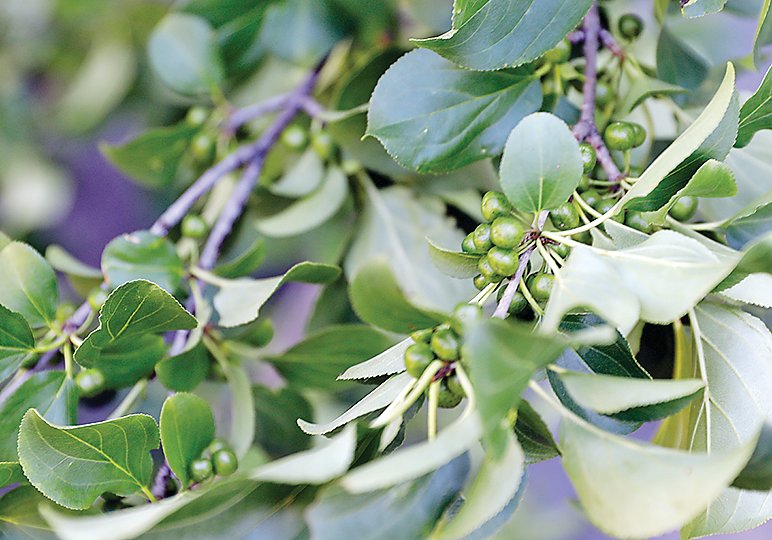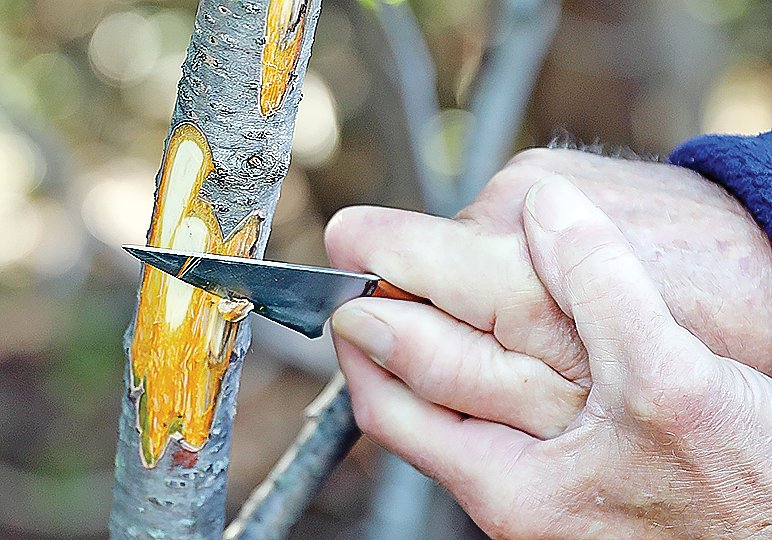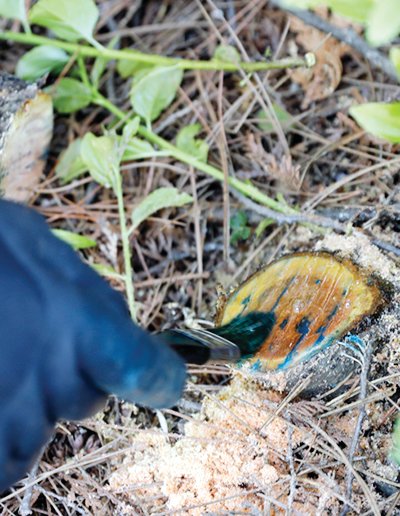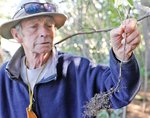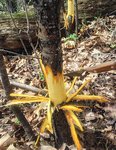Support the Timberjay by making a donation.
Battling buckthorn
The invasive shrub poses a potential threat to area forests
REGIONAL— Mark Haarman is a man with a mission. For years, Haarman, who lives near Ely, has been waging war against an invasive shrub that has the potential to fundamentally reshape the forests …
This item is available in full to subscribers.
Attention subscribers
To continue reading, you will need to either log in to your subscriber account, or purchase a new subscription.
If you are a current print subscriber, you can set up a free website account and connect your subscription to it by clicking here.
If you are a digital subscriber with an active, online-only subscription then you already have an account here. Just reset your password if you've not yet logged in to your account on this new site.
Otherwise, click here to view your options for subscribing.
Please log in to continue |
Battling buckthorn
The invasive shrub poses a potential threat to area forests
REGIONAL— Mark Haarman is a man with a mission. For years, Haarman, who lives near Ely, has been waging war against an invasive shrub that has the potential to fundamentally reshape the forests of the North Country.
It’s known as European buckthorn, or Rhamnus cathartica, and it’s been well established in parts of southern Minnesota for decades. In many places, it has become the dominant forest understory, choking off many native plant species in the process. Haarman worries that the same could happen across much of the Superior National Forest and the Boundary Waters unless residents in the region organize to eradicate pockets of the pernicious plant already growing in places like Ely and Soudan.
Haarman’s concern is hardly overblown. When longtime University of Minnesota forest ecologist Lee Frelich starts talking buckthorn, it can quickly take on the feel of a horror story. The shrub, which can grow up to 25 feet tall, contains a toxin in its leaves known as emodin, which prevents native plants from growing in the vicinity. Over time, the plant establishes dense thickets, which further shade out other plants.
The emodin found in buckthorn leaves not only impacts other plants. As it is washed into nearby wetlands, it’s also toxic to developing amphibians, like frog and toad tadpoles as well as young salamanders. The emodin also sickens birds, although it’s not known to be fatal to them. Even so, Frelich said most birds probably learn fairly quickly not to consume the berries— although they don’t learn until they’ve already spread some of the seeds. Not only are the buckthorn berries a poor food source for birds, they have the potential to displace a number of shrub species that are a major source of food for birds and many other species.
Frelich notes that the buckthorn does best in partial shade, which he said is common in much of the Superior National Forest, because the rocky terrain creates a lot of open and semi-open areas, particularly under white pine, aspen, and paper birch. Those are the areas currently occupied by shrubs like blueberries, juneberries, pin cherries, chokecherries, and dogwood, all of which provide an abundance of wild foods for native birds. If those shrubs are replaced by buckthorn, the impacts to native bird populations could be significant. And it isn’t just the organisms we see that can be affected by buckthorn. Frelich notes that the presence of buckthorn alters the soil chemistry in a way that can impact the soil microorganisms as well as the fungi and the mycorrhizal connections between fungi and other plants. In other words, said Frelich, it could have major ecosystem-wide impacts.
Once established in an area, preventing the spread of the buckthorn is challenging. The plant produces berries that start out green and turn black as they ripen in late summer and fall. While most birds likely learn to avoid the berries, every bird’s first encounter with them poses the possibility of new infestation as the seeds quickly work through their digestive system. Across the vast, sparsely inhabited Superior National Forest and the Boundary Waters wilderness, infestations could go undetected for years, and each outpost for the shrub is another launchpad for further spread.
In its native habitat, in Europe and Asia, buckthorn rarely dominates the landscape like it has been able to do in parts of Minnesota. But that’s because other plants there have adapted to survive the toxin that the buckthorn spreads. In North America, plants simply haven’t been exposed to the toxin and struggle to compete once buckthorn becomes established.
Other Eurasian invasives, like earthworms and nightcrawlers, do well in the presence of buckthorn, notes Frelich. In fact, Frelich says there’s evidence of a kind of symbiosis between nightcrawlers and buckthorn. Frelich compares the nightcrawler to a kind of farmer, plowing the soil to make way for something else to grow. In this case, nightcrawlers appear to create the ideal conditions for buckthorn and as the buckthorn grows, it creates a soil environment that allows for especially dense populations of nightcrawlers, as well as the spread of other Eurasian invasives. “It eventually transforms the environment to something where only European invasives can survive,” said Frelich.
It’s such eventualities that keep Haarman up at night. He’s been after buckthorn for years, cutting it out from public property when he finds it and asking for permission to eradicate it on private lands as well, a request that has been met with decidedly mixed responses at times. He knows of a number of thickets around Ely as well as clusters of the shrub on the Echo Trail and up the Cloquet Line.
He’s been joined in the fight locally by others as well. The Ely Field Naturalists have held a number of work days in the past couple years to keep the buckthorn at bay. The North St. Louis Soil and Water Conservation District has also organized efforts in the area.
Eradication typically involves cutting the plant just above the soil line and applying herbicide to the stump with a brush or sprayer. In a dense thicket, it can be a labor-intensive task, but Haarman notes that getting it early, before it’s had a chance to really get a foothold across the Superior National Forest is critical. If that happens, it could quickly become a lost cause.
Haarman isn’t just wielding a chain saw and some herbicide in battle against buckthorn. Given his background in media production, he said he’s also planning to produce some public service announcements on the topic later this year. He said he’s also planning to meet with a state agriculture official to discuss a possible ban on the ownership of female buckthorn. “It’s the only way to control the continuing spread,” said Haarman. He’s also hoping to get the issue before the state Legislature or St. Louis County Board sometime in the near future in hopes of enacting a ban on the shrub.
Raising awareness is critical to the fight, notes Haarman, since it’s going to take many hands and sharp eyes from the public to spot buckthorn outbreaks in the area. Haarman points out that the best time to spot buckthorn is in the late fall, after most other shrubs have dropped their leaves. European buckthorn maintains green leaves late into the fall and even early winter, so it often stands out in October and November, when other trees and shrubs are bare.
Haarman will be out there this fall on the hunt for this invasive pest. And he’s hoping plenty of other North Country residents will join the fight. Call him at 218-235-8300 if you’d like to help out.


